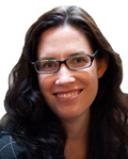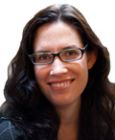Attention
Sharpen Your Powers Of Observation
Borrow the methods of scientists in the field
Posted July 11, 2012
Many of science’s most important breakthroughs, from the discovery of microorganisms to the theory of evolution, have come about through observation. The scientist’s gaze is clearly a powerful tool for making sense of how the world works. But it is not the same as “everyday observation,” as Catherine Eberbach and Kevin Crowley call the kind of casual looking done by those of us who don’t wear lab coats. “Seeing is not observing,” the University of Pittsburgh researchers point out. As practiced by scientists, observation is a rigorous activity that integrates what the scientists are seeing with what they already know and what they think might be true. In an article published in the journal Review of Educational Research, Eberbach and Crowley lay out the differences between expert observation and “just looking” — with the aim of helping the rest of us observe the way scientists do.
First, scientists train their attention, learning to focus on relevant features and disregard those that are less salient. One of the best ways to do this is through the old-fashioned practice of taking field notes: writing descriptions and drawing pictures of what you see. “When you’re sketching something, you have to choose which marks to make on the page,” says Michael Canfield, a Harvard University entomologist and editor of the recent book Field Notes on Science and Nature. “It forces you to make decisions about what’s important and what’s not.” Keeping a field notebook — whether the “field” under observation is a sales floor, a conference room, or the garden in your own backyard — makes everyday observation more scientific in another way: Scientists keep careful records of their observations, quantifying them whenever possible. Try attaching a number to each episode you observe: how many times a customer picks up an item before deciding to buy it, how many minutes employees spend talking about office politics before getting down to business.
While casual observers simply sit back and watch what unfolds, scientific observers come up with hypotheses that they can test. What happens if a salesperson invites a potential customer to try out a product for herself? How does the tone of the weekly meeting change when it’s held in a different room? Scientists actively engage with their perceptions in another way: they organize and analyze what they’ve seen after the observation session is over. (Even Charles Darwin didn’t realize that the famous finches of the Galapagos Islands were varied but related members of the same species until he returned to England and began working out his theory of natural selection.) The skills sharpened by such extended reflection are especially important for young people to develop. While we want today’s students to be able to look for information on the web, we also want them to be able to synthesize and interpret the material they find. “These are the essential capacities that all successful people will need to navigate life in the twenty-first century,” Canfield says.
Lastly, Eberbach and Crowley note that while novices use observation to collect information and then move on, scientists return to observing again and again, engaging in the cycle of observing, recording, testing, and analyzing many times over. It’s a lot more work than just looking, but it’s how great discoveries are made.
Read more about the science of learning at www.anniemurphypaul.com, or email the author at annie@anniemurphypaul.com.
This post originally appeared on Time.com.


